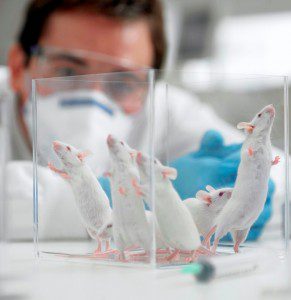 When scientists conduct experiments, influences and errors occur that affect the results of the experiments. Those influences and errors that occur because of some characteristics of the experimenter or because of something the experimenter did are called experimenter effects. Experimenter effects reduce the validity of the experiment, because the results do not really tell about the hypothesis; they show that the experimenter somehow (usually unwittingly) influenced or changed the results. For that reason, most good researchers look for ways to prevent or minimize experimenter effects. There are two major kinds of experimenter effects: noninteractional and interactional.
When scientists conduct experiments, influences and errors occur that affect the results of the experiments. Those influences and errors that occur because of some characteristics of the experimenter or because of something the experimenter did are called experimenter effects. Experimenter effects reduce the validity of the experiment, because the results do not really tell about the hypothesis; they show that the experimenter somehow (usually unwittingly) influenced or changed the results. For that reason, most good researchers look for ways to prevent or minimize experimenter effects. There are two major kinds of experimenter effects: noninteractional and interactional.
Noninteractional Effects
Noninteractional effects are found in research that does not require experimenters’ interaction with human or animal research subjects. There are three major subtypes of such effects:
Academic Writing, Editing, Proofreading, And Problem Solving Services
Get 10% OFF with 24START discount code
- Scientists observe human behavior, animal behavior, or natural events and record what is observed, but there are errors in what is recorded. These are called observer effects. For example, an experimenter who is responsible for counting the number of mistakes someone makes might fail to count some mistakes that would contradict the experimenter’s theory.
- Scientists look at the results of research, which may be accurate enough but which the scientist then interprets incorrectly. For example, researchers might get the opposite results of what they expected based on their theory, but after thinking about it, they may decide that the results support their theory after all. These are called interpreter effects.
- Scientists intentionally report falsified results of research. For example, a researcher (such as a student worried about having a good dissertation) might produce fake data instead of collecting real observations. These are called intentional effects.
Interactional Effects
Interactional experimenter effects occur when the experimenter works (or interacts) with human or animal subjects. There are several major subtypes of interactional experimenter effects:
- Biosocial effects operate when the experimenter’s age, sex, or race unintentionally influences the outcome of the research. Subjects may respond differently to an experimenter, depending on whether the experimenter is male or female; Asian, African American, or Caucasian; old, middle-aged, or young. In addition, the subject’s age, sex, and race may influence the manner in which an experimenter behaves.
- Psychosocial effects are the effects associated with experimenters’ psychological and social characteristics. Examples of these characteristics include anxiety, a need for approval, hostility, warmth, or authoritarianism, all of which may affect the behavior or responses of the subjects in an experiment.
- Situational effects are found in the experimental environment itself. These effects may occur because of the physical characteristics of the laboratory, the experimenter’s previous acquaintanceship with the subject, or whether the subject is the first person participating in the experiment or one who participates later in the experiment.
- Modeling effects occur when experimenters have tried out the experiment on themselves, and their responses to the experiment are later unintentionally communicated to their subjects, causing the subjects to behave or respond similarly to the behavior or responses of their particular experimenter.
- Expectancy effects, the most frequently studied experimenter effect type, occur when the results of the experiment are in the direction that the experimenter expects them to be. This expectancy is communicated by subtle cues through various channels of nonverbal communication, such as tone of voice, facial expression, and body movement.
In an experiment running rats in a maze, if the experimenters were told that their rats were good maze runners (bright), the rats ran the maze well. If the experimenters were told their rats were poor maze runners (dull), the rats ran the maze poorly. What the experimenters expected from their rats determined the actual behavior of the rats, although the rats had been assigned their labels of “bright” or “dull” completely at random. (It is believed that the experimenters may have communicated their expectancy to the rats by handling them more gently if they believed they were bright and handling them more roughly if they believed they were dull.) A very early study involved a horse named Clever Hans who belonged to Mr. von Osten, a mathematics instructor. Clever Hans could perform mathematical calculations by tapping his foot in response to questions. After much close observation, a scientist found that nonverbal, almost imperceptible, head movements from Mr. von Osten, or even strangers asking Hans a question, told Hans when to start tapping and when to stop.
During the 20th century and so far in the 21st, as the various experimenter effects have been recognized to be affecting experimental research, researchers in many disciplines, such as psychology, sociology, anthropology, and medicine, have devised experimental procedures and precautions to reduce experimenter effects in their research.
References:
- Pfungst, O. (1965). Clever Hans (C. L. Rahn, Trans.). New York: Holt, Rinehart & Winston. (Original work published 1911)
- Rosenthal, R. (1976). Experimenter effects in behavioral research (Enlarged ed.). New York: Irvington.